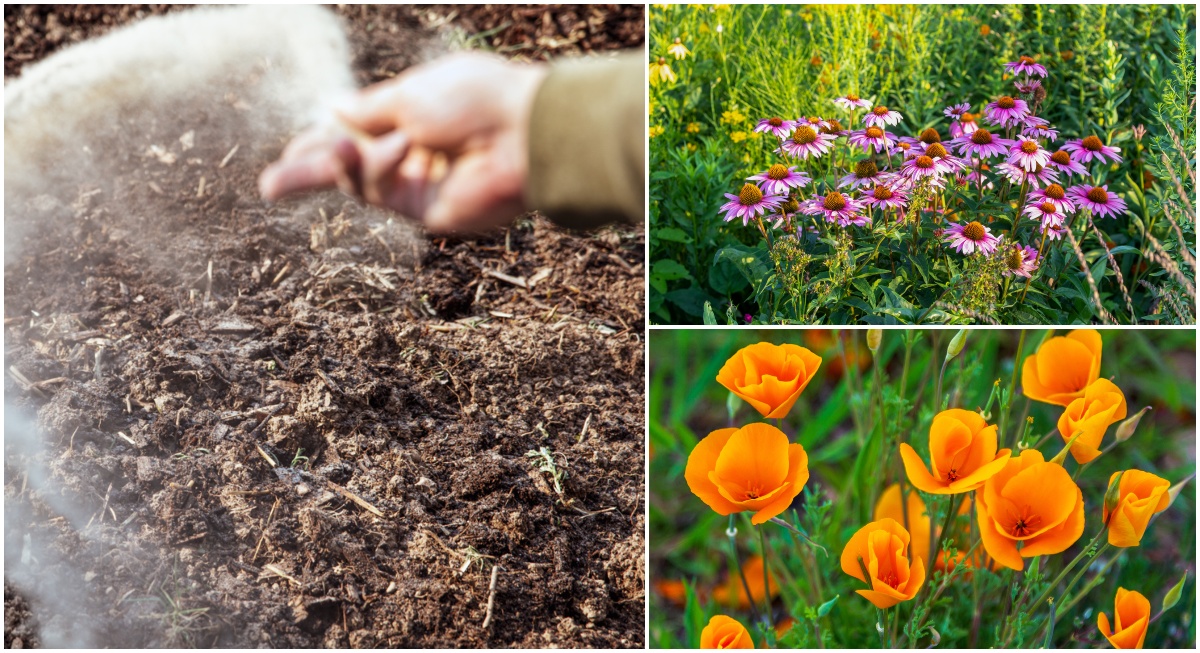
Filling your garden with an abundance of gorgeous flowers can be as simple as scattering seeds on the ground in spring.
It’s really that easy. Pick a sunny site, amend the soil with compost, plant your seeds according to the packet directions, irrigate, and walk away.
Starting flowers and other ornamentals from seed is – by leaps and bounds – far more economical than purchasing starter plants and flats from the plant nursery every year.
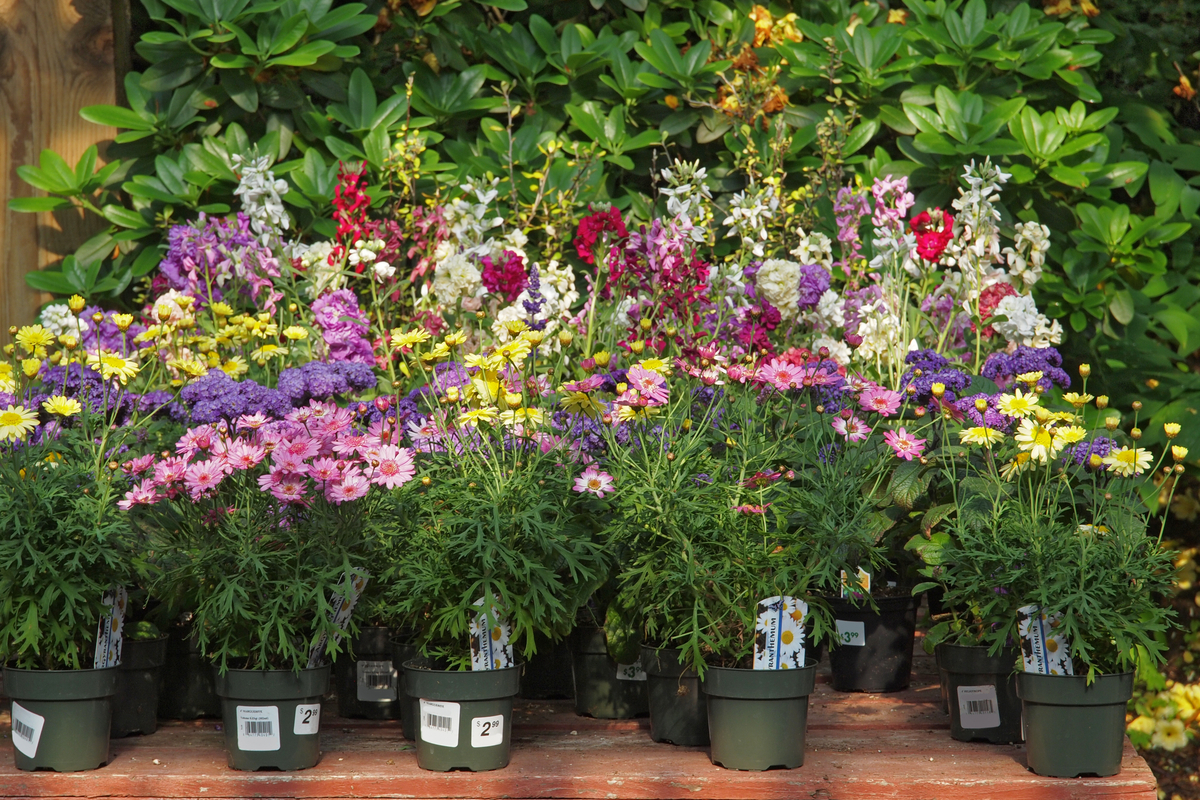
And many annual flowers that grow well from seed tend to be self-sowers – buy and plant them once, and they will return again and again.
Seed catalogs have a wider selection of cultivars to choose from as well. Growing from seed opens up the door to the most unusual and enchanting varietals not typically available as plugs from the garden center.
Choose among annuals that will provide a glorious show in their first (and only) year. Or perennials that bloom from year two and onward. Selecting a mix of annuals and perennials will ensure your gardens will always be in bloom.
Here we’ve gathered up the easiest flower seeds to direct sow straight into your garden.
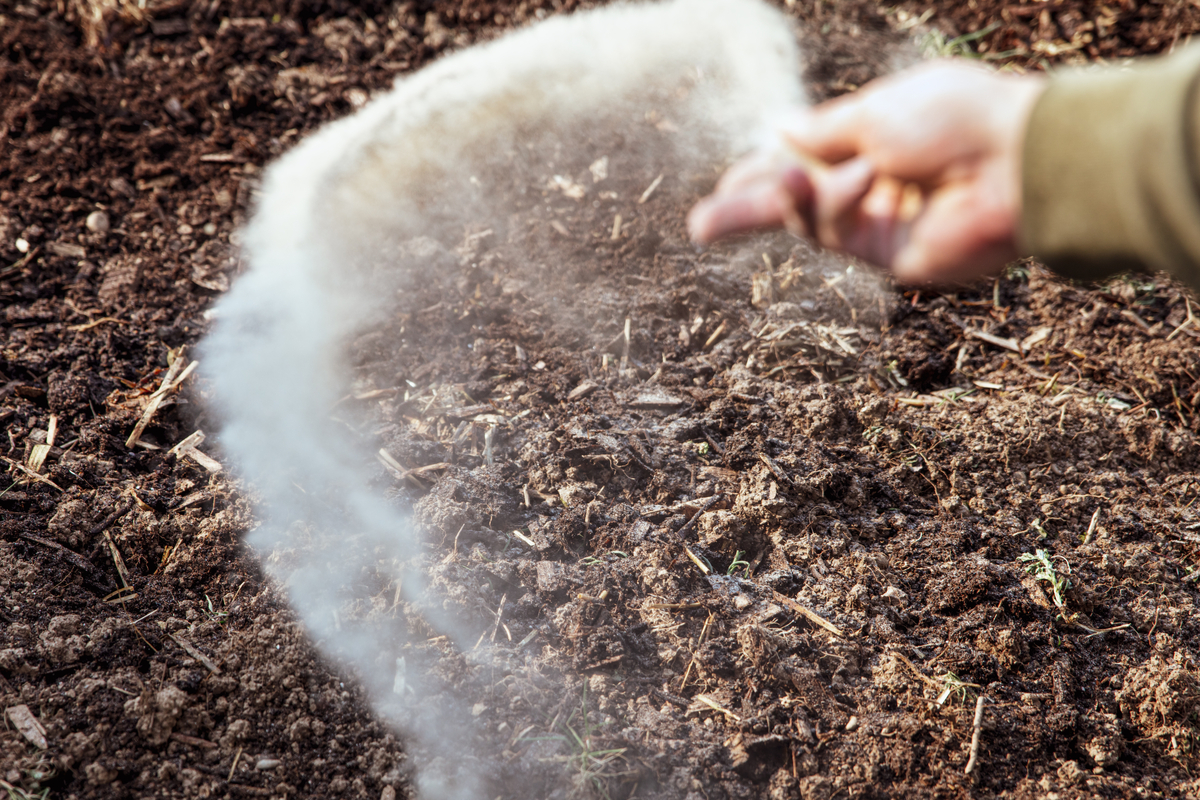
These foolproof, beginner-level, brown thumb friendly flowering plants are hardy, low-maintenance, and mostly trouble-free, readily establishing themselves in your garden in only a season or two.
1. Columbine (Aquilegia spp.)

Columbine is a huge genus of flowering plants that range in meadows and woodlands across the Northern Hemisphere.
There’s 70 species of columbine, and nearly as many hybrids and crosses, giving gardeners a vast amount of choice in colors and flower forms.
The classic columbine is a hardy, bushy, clump-forming perennial that blooms with dainty bell-shaped flowers in late spring. Columbine is easily identified by the five elongated petals, known as the spurs, that frame the flowerhead in a starry shape.
Columbine grows exceedingly well from seed. Although it’s a short-lived perennial that will eventually die back after 2 to 3 seasons, columbine will naturalize itself in the garden through ample self-seeding.
Get columbine started by sowing seeds in autumn or mid-winter. Columbine seeds need a 3 to 4 week chilling period to trigger germination. When the soil has warmed in spring, columbine will emerge in 30 to 90 days.
Hardiness zone: 3 to 9
Sun exposure: Full sun to part shade
Bloom time: April to May
Attracts: Butterflies, hummingbirds, and bees
2. Pansy (Viola spp.)
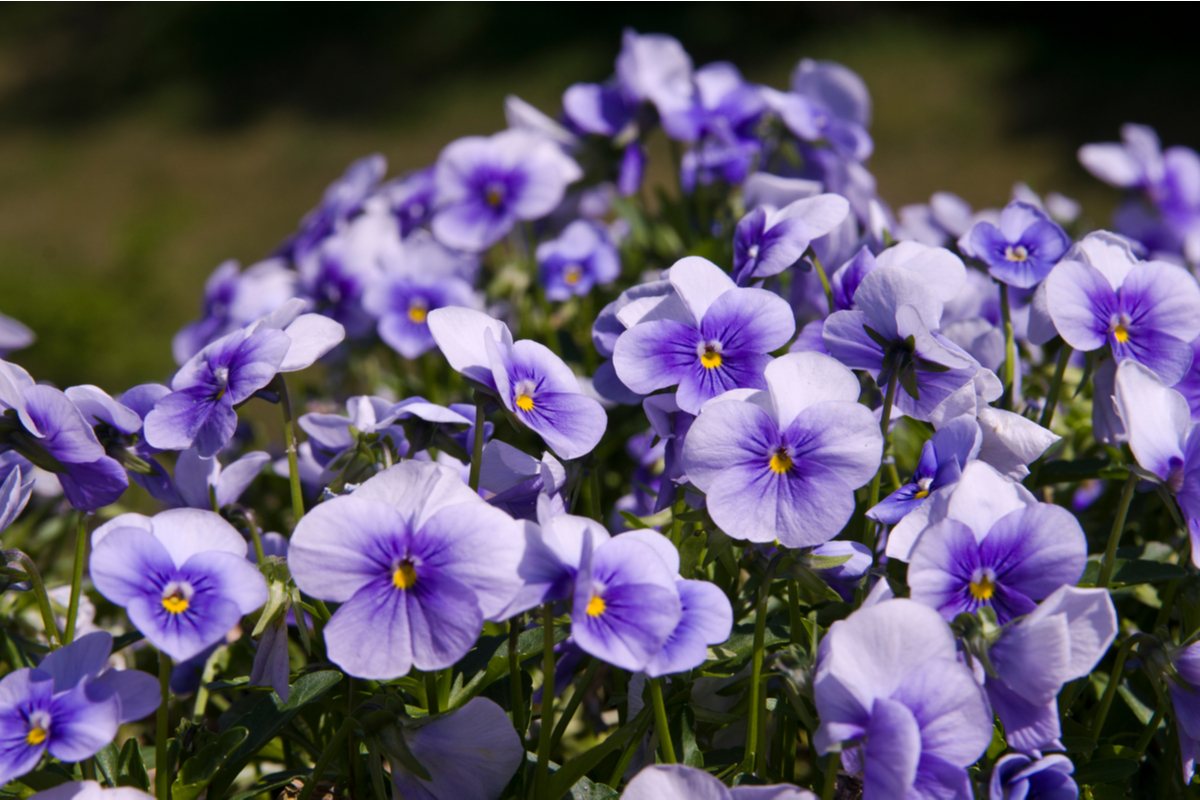
Pansies are adorable low-growing flowers with the happiest little faces.
Violas are a huge family of flowering plants that are found all over the world. There are hundreds of species in the genus, with numerous hybrids and varietals to peruse in every color (or multicolors) of the rainbow.
The garden pansy (Viola × wittrockiana) is one of the most beloved bedding plants for the cooler spring and fall weather. Wild pansy (V. tricolor) will bloom continuously until frost.
For native pollinator gardens, plant sand violets (V. affinis), evergreen violet (V. sempervirens), or bird’s foot violet (V. pedata).
Pansies will freely seed themselves through the garden, although hybrid varieties likely won’t come true from seed.
You can sow pansy seeds outdoors in autumn, or in early spring as soon as the soil can be worked. Barely cover the seeds with soil. Depending on the ground temperature, pansy seeds can take 20 to 50 days to poke up through the soil.
Hardiness zone: 3 to 10
Sun exposure: Full sun to part shade
Bloom time: April to October
Attracts: Butterflies
3. Lupine (Lupinus spp.)
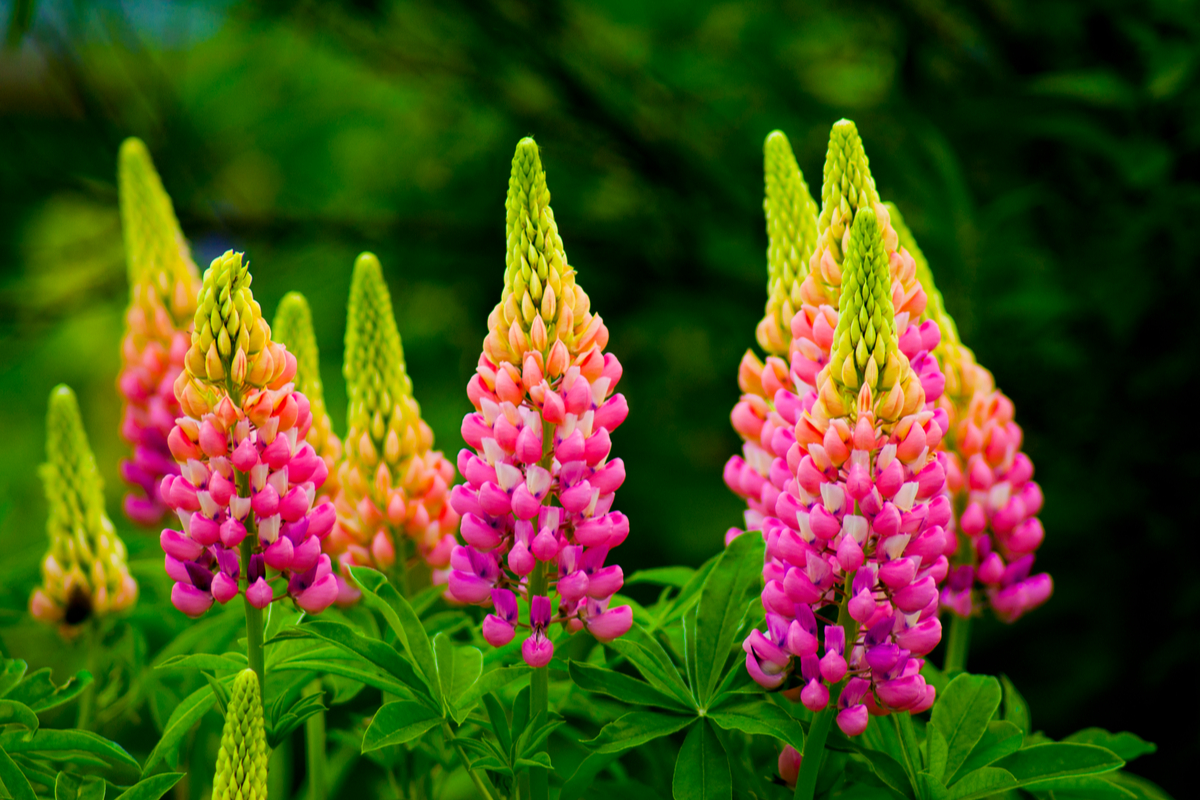
Lupines in flower are a feast for the eyes, blanketing the garden with its colorful spires beginning in late spring.
The enormous and erect floral spikes, reaching up to 4 feet in height, are impossible to miss. Arising above the foliage, the racemes are densely packed with small and delicate clamshell flowers in white, pink, yellow, red, blue, purple, or bicolor.
Lupines aren’t just gorgeous, they are practical assets too. As members of the Fabaceae family, lupines are nitrogen fixers that will enrich your soil wherever you plant them.
Most lupine species are indigenous to North America, with Big Leaf Lupine (L. polyphyllus) and Wild Lupine (L. perennis) as perennial garden favorites. The crossing of these and other lupine species has created a profusion of hybrids that have been specially bred for improved vigor and vibrance.
Lupine seeds should be soaked in water for 24 hours before sowing them in the garden. Seed planting can be done in early spring, as soon as the soil can be worked. Lupine seeds can take anywhere from 14 to 60 days to germinate.
Growing lupines requires patience and you’ll be amply rewarded with the bold and striking blooms in their second year.
Hardiness zone: 3 to 7
Sun exposure: Full sun
Bloom time: May to July
Attracts: Butterflies, hummingbirds, and bees
4. Sweet Pea (Lathyrus odoratus)
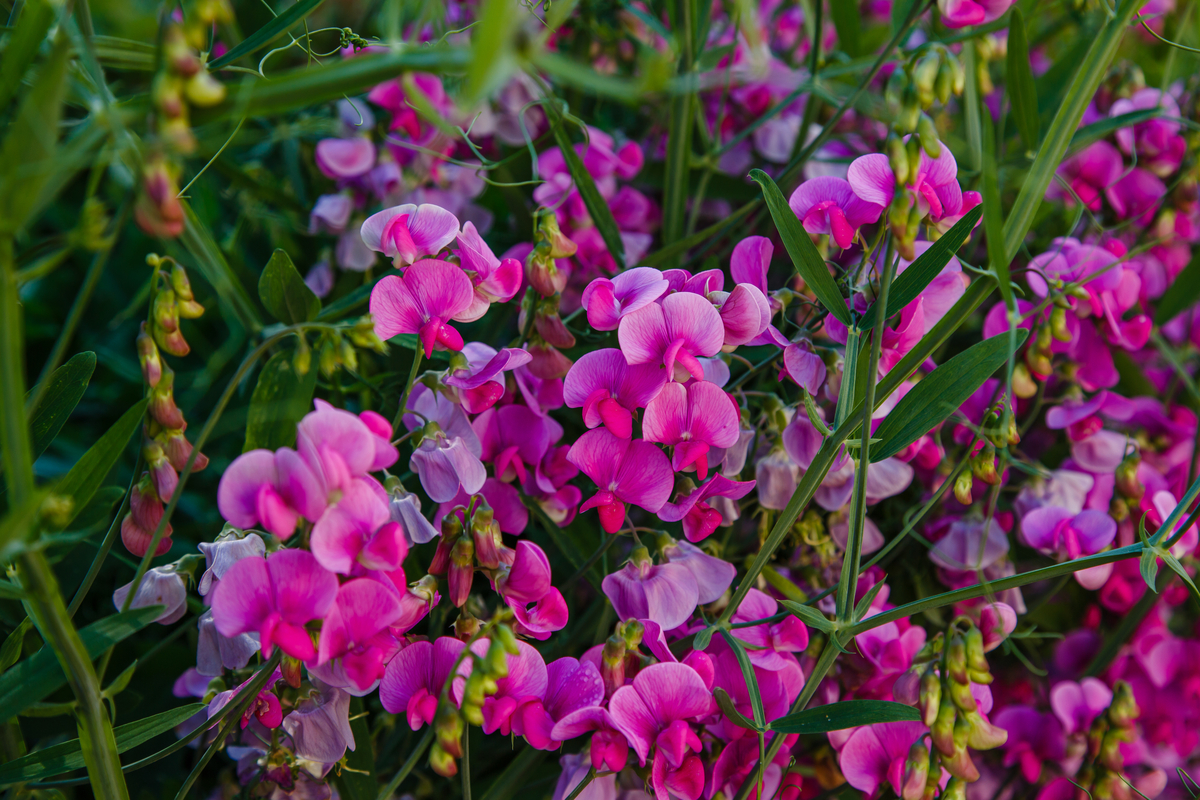
Sweet pea is an intensely fragrant annual bloomer with exquisite winged and ruffled flowers that come in every color except yellow.
The blooms are excellent as cut flowers. A cut-and-come-again specimen, the more you pick sweet pea flowers, the more they will bloom. And as a legume, the plant itself is a great little nitrogen fixer.
Sprawling up trellises and wigwams with its twining tendrils, sweet pea vines will climb up any nearby support. Without a structure, sweet peas will form charming bushy mounds.
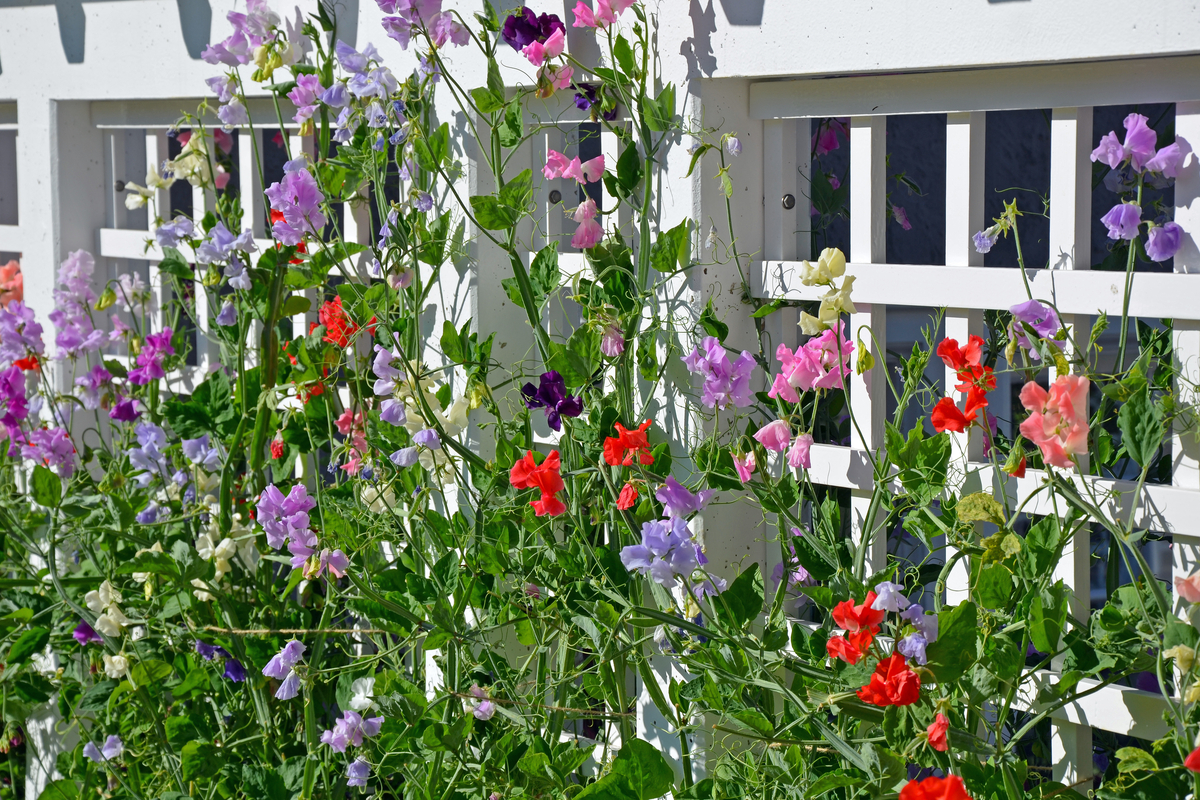
Sweet peas are native to the Mediterranean and will bloom continuously from spring to fall in cooler summer climates. When things get too hot and humid for sweet pea, the plants will begin to fade. Keeping the soil cool with mulch will go a long way toward prolonging bloom.
Growing sweet pea from seed is all about getting the timing right. In zones 7 and below, direct sow sweet peas in the garden before the last frost date, in late winter or early spring. In zones 8 and above, plant seeds in late fall.
Before sowing, soak sweet pea seeds in water for 24 hours and germination should only take 7 to 15 days.
Hardiness zone: 2 to 11 (annual)
Sun exposure: Full sun
Bloom time: May to September
Attracts: Bees and butterflies
5. Poppy (Papaver spp.)
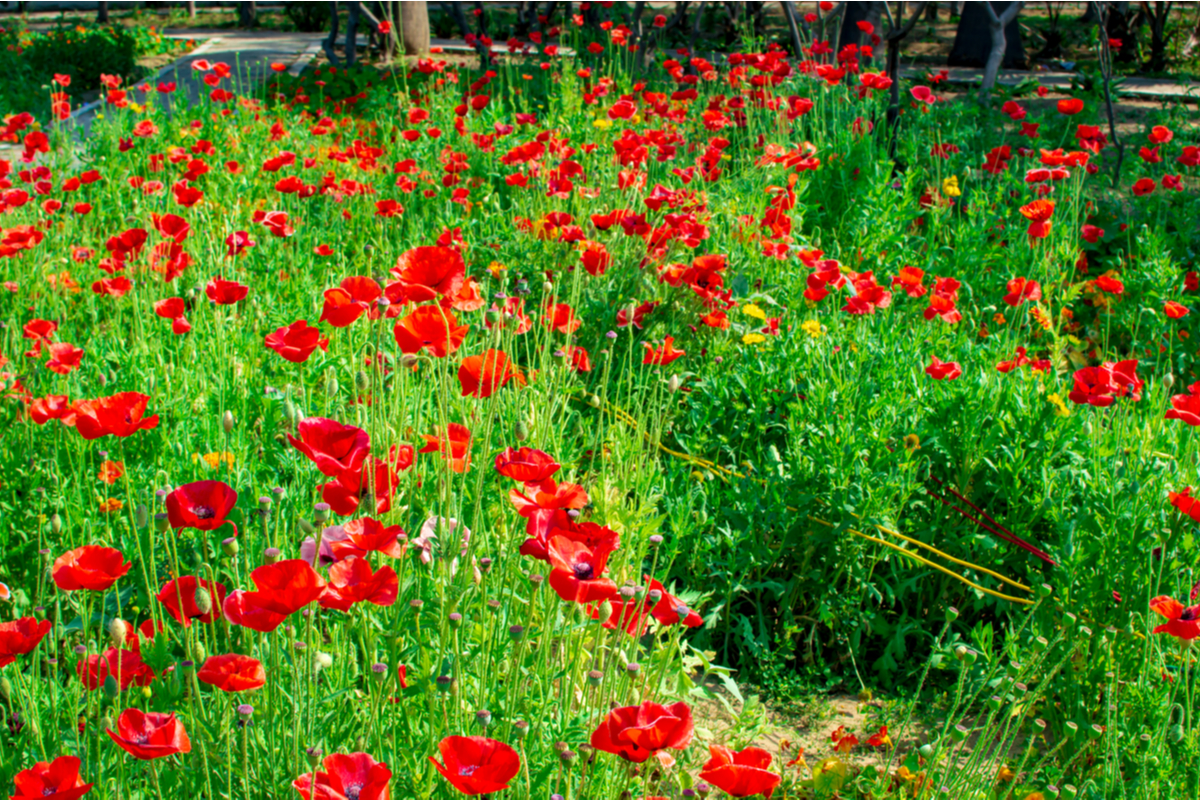
Poppies are hardy annual or perennial wildflowers that need only be planted once. Once established, poppies will self-seed and spread through the garden every year.
The field poppy (P. rhoeas) is famous for its papery scarlet petals with dark blotches in the center. The Oriental poppy (P. orientale) is another excellent choice, available in scads of colors ranging from pinks, oranges, purples, and whites. The breadseed poppy (P. somniferum) produces breathtaking mauve flowers along with edible poppy seed.
There’s also California poppy, Iceland poppy, Spanish Poppy, Moroccan poppy, and Welsh poppy – truly a smorgasbord of poppy options.
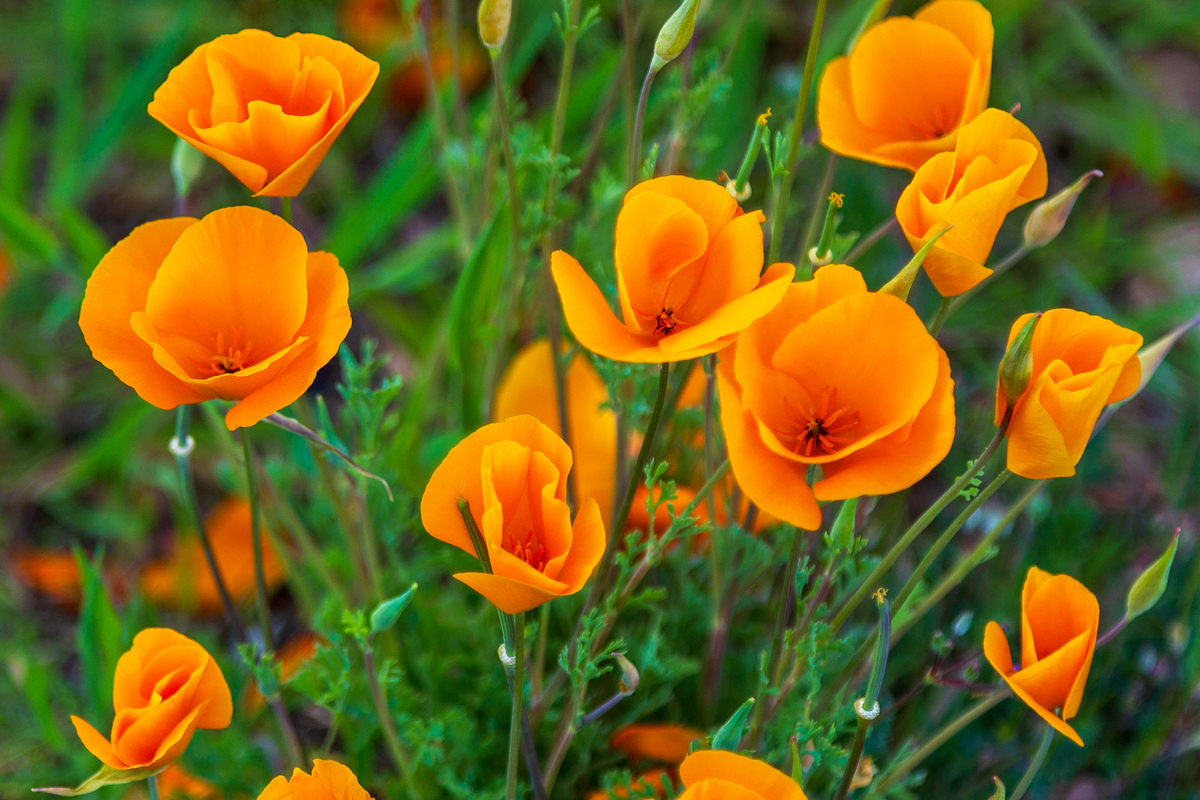
Sow poppy seeds outdoors before the last frost in early spring. There’s no need to bury them, simply scatter seeds over the surface of the soil. Seeds will sprout in 20 to 30 days.
Hardiness zone: 3 to 10
Sun exposure: Full sun
Bloom time: June to August
Attracts: Butterflies and bees
6. Coneflower (Echinacea spp.)
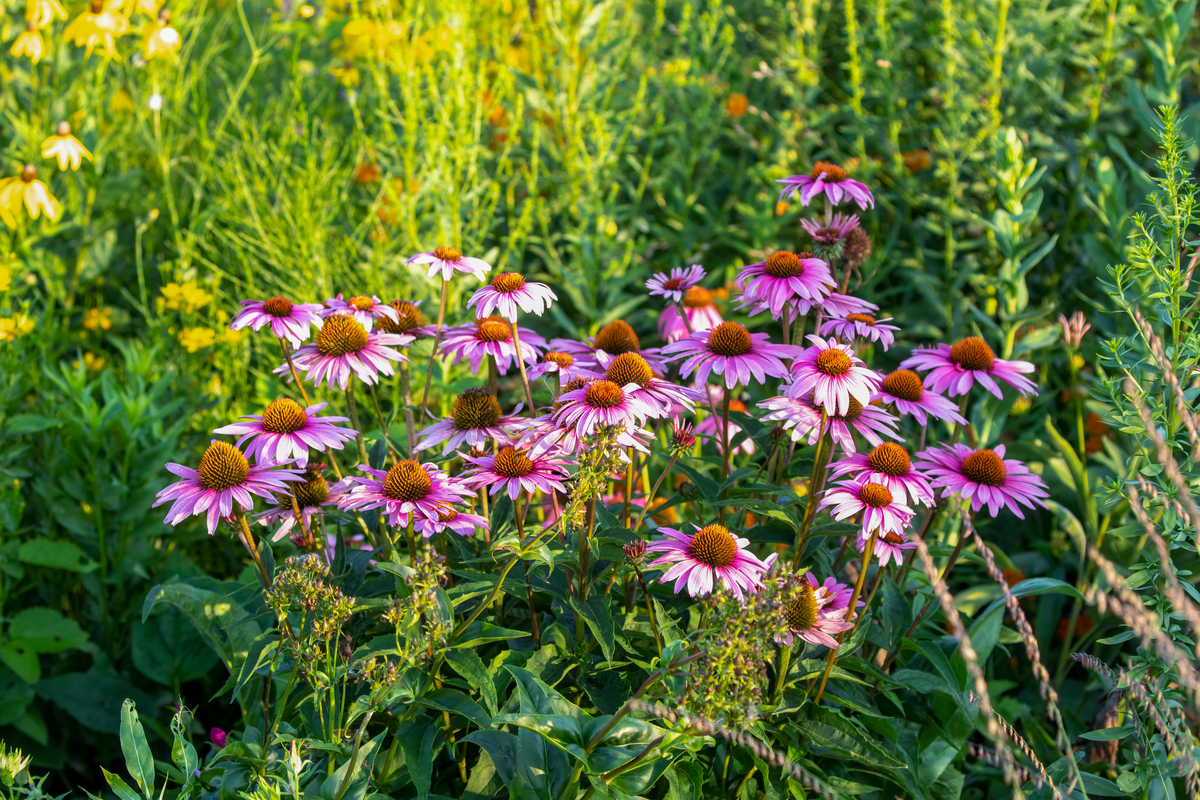
Coneflowers are about as tough and tenacious as can be. Thriving on neglect, these native perennials don’t need help from us to look fabulous.
There’s much to love about coneflowers: the huge daisy-like blooms have a long flowering period, the flower’s nectar and seeds support pollinators and wildlife, and the plants will return – bigger and better – year after year.
The extensive breeding of Echinacea has resulted in a massive array of coneflower options to grow from seed. Though purple coneflower (E. purpurea) will always be in style, newer cultivars take on a myriad of vibrant or pastel shades, with fluffy flowers or double flowers that change up coneflower’s look completely.
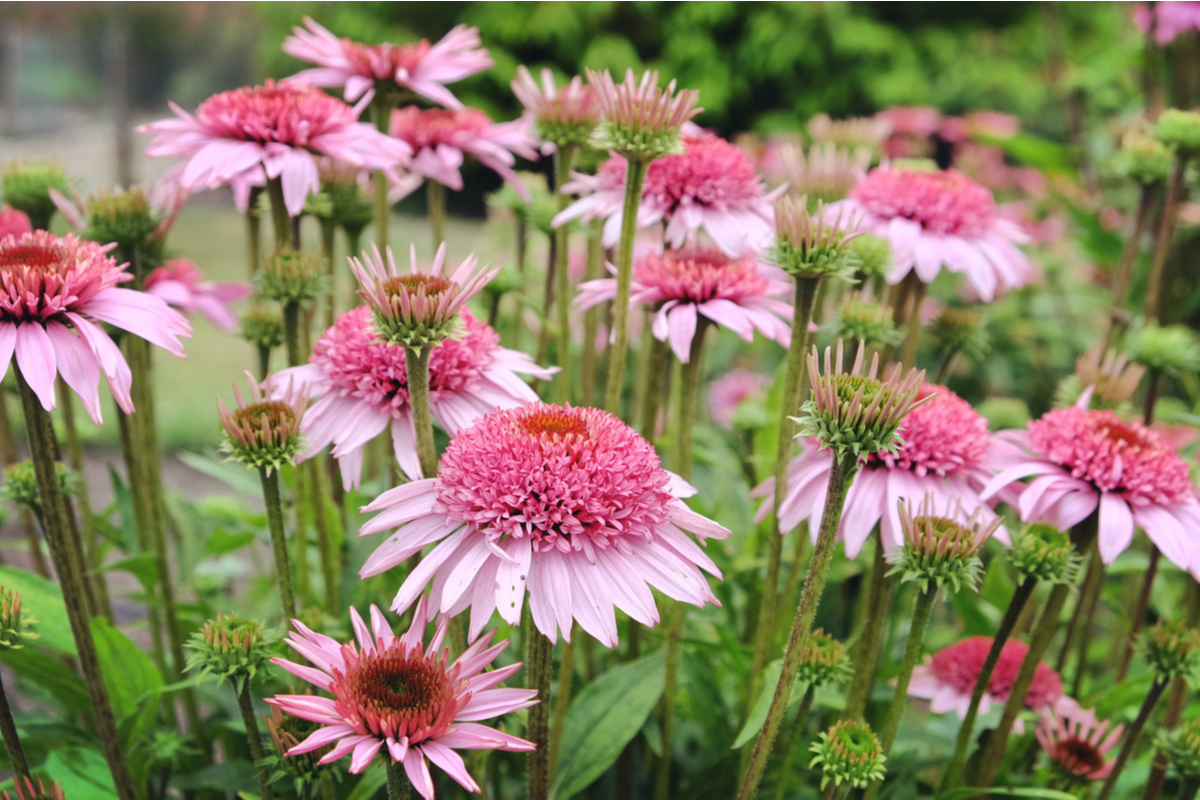
Introduce coneflowers to the garden by sowing seeds outdoors in early spring or fall. Cover the seeds up lightly with soil, about 1/8-inch deep. Coneflower seedlings will emerge in 10 to 21 days.
Hardiness zone: 3 to 10
Sun exposure: Full sun to light shade
Bloom time: June to August
Attracts: Butterflies, birds, and bees
7. Moss Rose (Portulaca grandiflora)
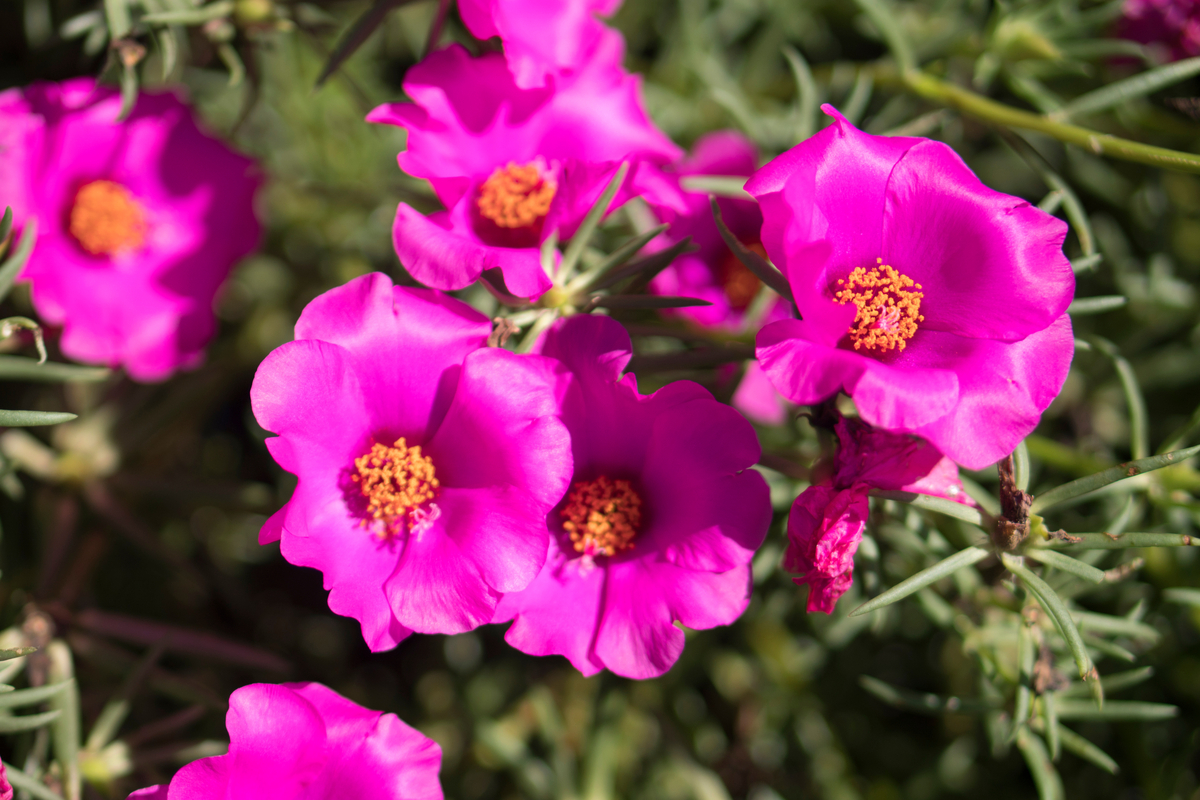
Moss rose is a lovely ground hugging annual with some serious flower power.
In bloom from late spring to the first frost, moss rose features ruffled blooms that come in single, semi-double, and fully double flower forms in shades of red, pink, orange, yellow, and white. These arise from a bed of fleshy, succulent foliage that grows 3 to 8 inches in height.
The rose-like flowers open fully on sunny days and close up every evening.
As a native of the dry and hot plains of South America, moss rose is well adapted to heat and drought. Plant moss rose in a site with good drainage and it will be practically maintenance free.
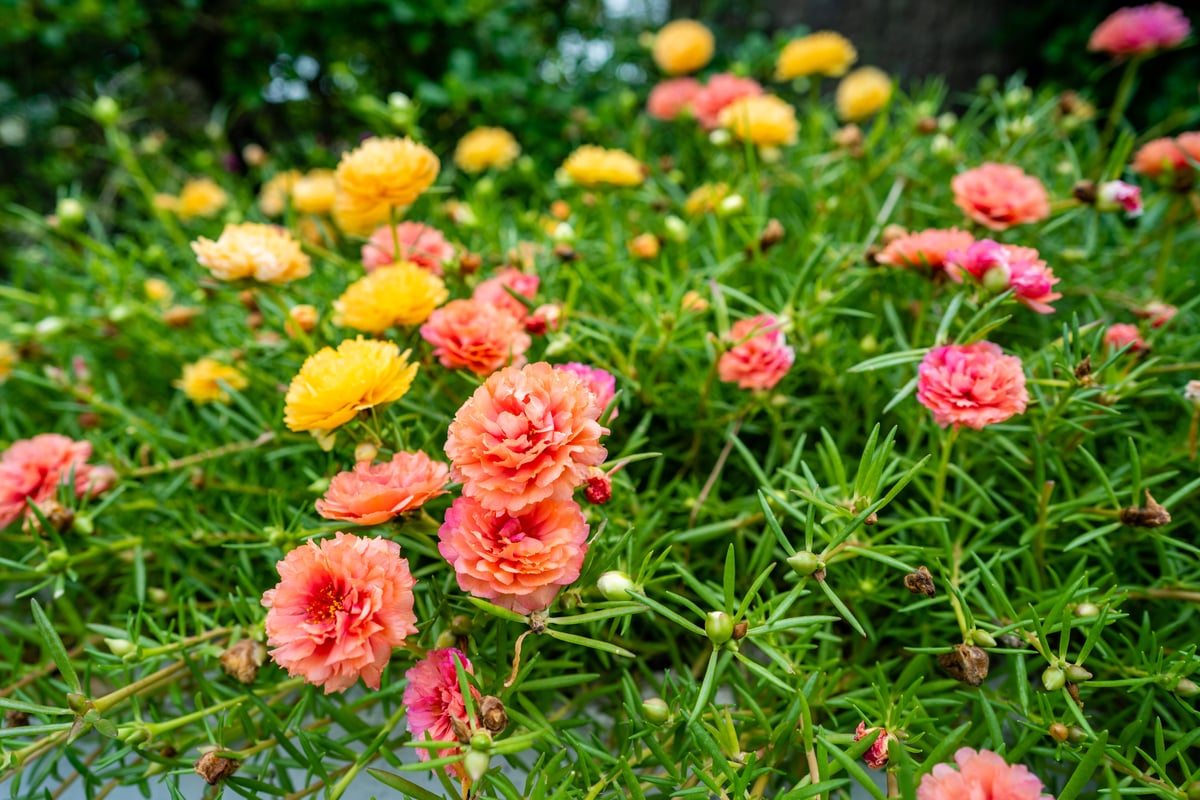
Sow moss rose seeds in the garden after the last frost date. These seeds need light to germinate, so only barely cover them with soil. Moss rose will sprout around 14 days after planting.
Hardiness zone: 2 to 11 (annual)
Sun exposure: Full sun
Bloom time: June to frost
Attracts: Bees
8. Zinnia (Zinnia elegans)

Zinnias are fast growing annuals that bloom continuously from early summer to the first frost.
There’s a zinnia for everyone. Available in an incredible range of colors, heights, flower shapes, and bloom sizes, zinnias can look like fluffy pom poms, or they can more closely resemble daisies, dahlias, or cactus flowers.
Choose from single flowered, semi double flowered, fully double flowered, giant flowered, or globe flowered options – or plant up zinnia seed mixes when you can’t decide.
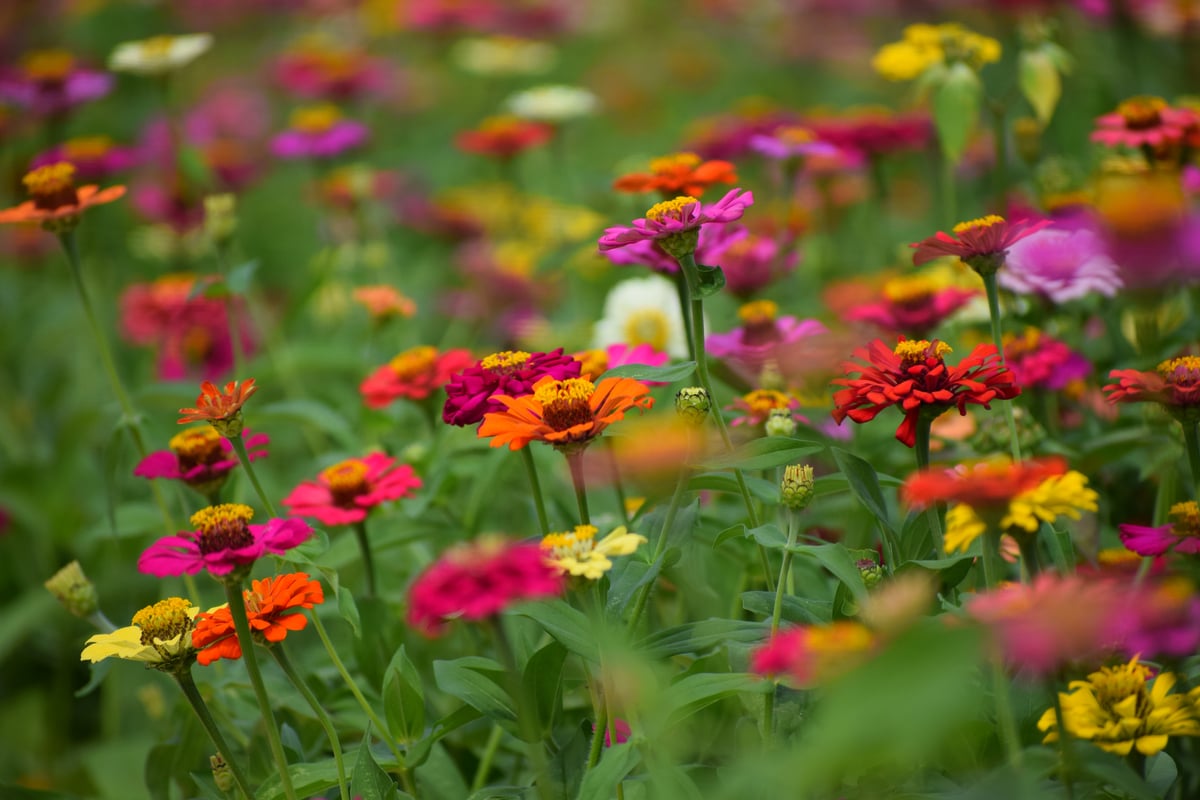
Among the easiest plants to grow, zinnias are sun lovers that hail from Mexico and the southwestern US. Zinnia is tolerant of most growing conditions and will shrug off periods of extreme heat and drought like a boss. Plant zinnias in sites with full sun and good drainage for the best floral displays.
Zinnia seeds are ready sprouters too, and can be sown directly in the garden after last frost in spring. Cover them lightly with soil and seeds should germinate in 5 to 24 days.
As true annuals, zinnias will die back after flowers have gone to seed. You can prompt more blooms by deadheading flowers when they start to fade. Be sure to allow a few flowerheads to fully mature so you can collect seeds to grow for next year.
Hardiness zone: 2 to 11 (annual)
Sun exposure: Full sun
Bloom time: June to frost
Attracts: Birds, hummingbirds, and butterflies
9. Morning Glory (Ipomoea spp.)
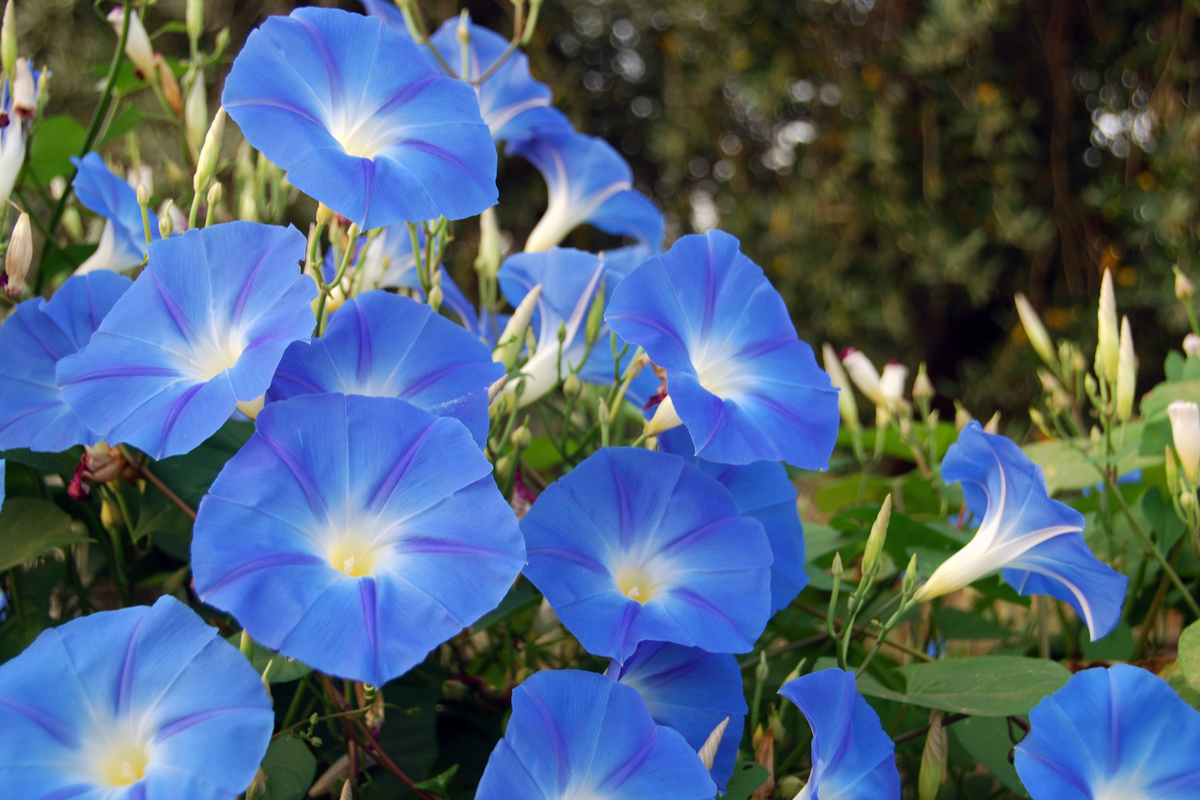
Morning glories will enthusiastically grow up and over any vertical support you give them. Arbors, pergolas, trellises, walls, and fences will be extra wonderful when ensnared by morning glory’s heart shaped vines.
All season long, morning glories bloom continuously with large, deep throated trumpet flowers, each one opening in the morning and fading by the afternoon. Moonflower (I. alba) does the opposite, blooming with white flowers only at night.
To say that morning glories easily grow from seed is a bit of an understatement. Sow them in the garden one year, and they will self-seed with reckless abandon – to a perhaps annoying degree – every year, forevermore. Pull up wayward seedlings each spring to keep them confined to the plot.
Common morning glory (I. purpurea), blue morning glory (I. indica) and heavenly blue morning glory (I. tricolor) are popular picks for the garden.
Don’t overlook other interesting Ipomoea morning glories though. Wild potato vine (I. pandurata) is a North American native that blooms with brilliant white flowers that have a shock of purple deep in the floral throat. As its name suggests, this species produces edible tubers that taste similar to yams.
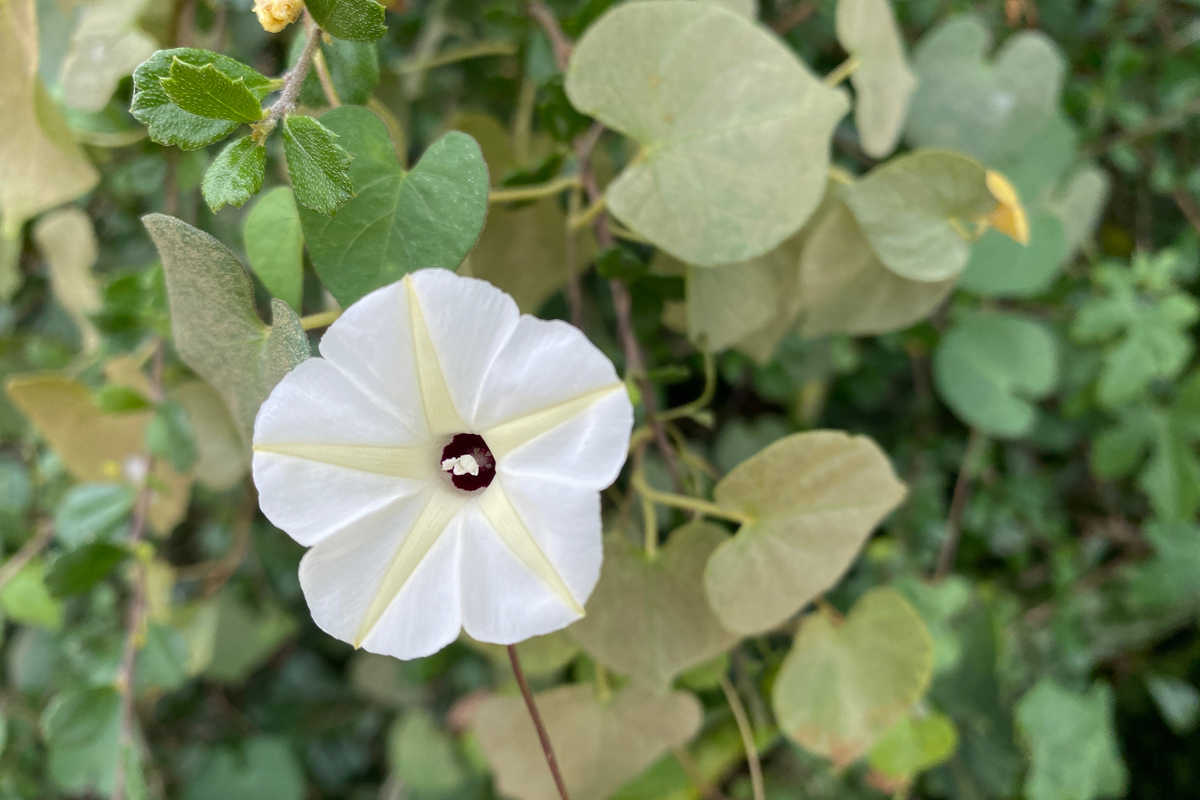
Hardiness zone: 2 to 11 (annual)
Sun exposure: Full sun
Bloom time: June to October
Attracts: Hummingbirds and butterflies
10. Common Sunflower (Helianthus annuus)

Common sunflower is the most iconic of the sunflowers, a towering beauty that produces deep brown floral disks surrounded by a whirl of golden yellow petals. Flowerheads can reach gargantuan proportions, up to 12-inches across.
This North American native is a fast growing annual that self-seeds every year in plains, prairies, and meadows. And like most wildflowers, it requires minimal care and can tolerate nutrient poor and dry soils.
Plant sunflower seeds in a sunny spot once all risk of frost has passed in spring. The seeds will sprout in roughly 7 days. Common sunflower grows very fast and will bear its cheerful flowers in late summer, when most other blooms are spent.
Save some seeds from your best plants to sow in the garden the following spring.
Hardiness zone: 2 to 11 (annual)
Sun exposure: Full sun
Bloom time: July to August
Attracts: Birds, bees, and butterflies

Get the famous Rural Sprout newsletter delivered to your inbox.
Join the 50,000+ gardeners who get timely gardening tutorials, tips and tasks delivered direct to their inbox.

